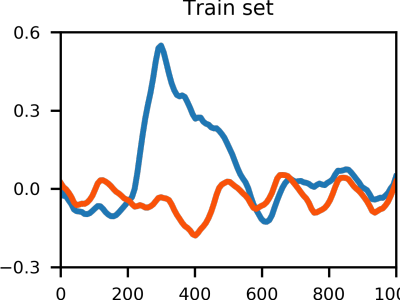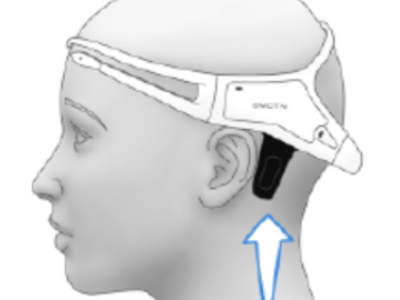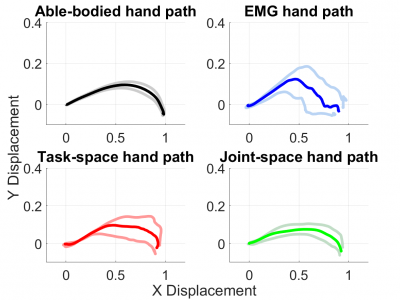Biophysiological Signals
Dataset description
This dataset contains EEG signals from 73 subjects (42 healthy; 31 disabled) using an ERP-based speller to control different brain-computer interface (BCI) applications. The demographics of the dataset can be found in info.txt. Additionally, you will find the results of the original study broken down by subject, the code to build the deep-learning models used in [1] (i.e., EEG-Inception, EEGNet, DeepConvNet, CNN-BLSTM) and a script to load the dataset.
Original article:
- Categories:
 2965 Views
2965 Views
This dataset contains cardiovascular data recorded during progressive exsanguination in a porcine model of hemorrhage. Both wearable and catheter-based sensors were used to capture cardiovascular function; the wearable system contained a fusion of ECG, SCG, and PPG sensors while the catheter-based system was comprised of pressure catheters in the aortic arch, femoral artery, and right and left atria via a Swan-Ganz catheter.
- Categories:
 1548 Views
1548 Views
Data are collected before and after percutaneous transluminal angiography (PTA) for dialysis patients.
Each sample is labeled as a-b-before.wav or a-b-after.wav and the associated txt, where a is the patient id and b is the location id.
The first position was the arterial-venous junction, and the second point was 3 cm from the first position along the vein.
The distances between the adjacent positions were also about 3 cm.
- Categories:
 485 Views
485 ViewsEach voice sample is stored as a .WAV file, which is then pre-processed for acoustic analysis using the specan function from the WarbleR R package. Specan measures 22 acoustic parameters on acoustic signals for which the start and end times are provided.
The output from the pre-processed WAV files were saved into a CSV file, containing 3168 rows and 21 columns (20 columns for each feature and one label column for the classification of male or female).
- Categories:
 1480 Views
1480 ViewsSynergistic prostheses enable the coordinated movement of the human-prosthetic arm, as required by activities of daily living. This is achieved by coupling the motion of the prosthesis to the human command, such as residual limb movement in motion-based interfaces. Previous studies demonstrated that developing human-prosthetic synergies in joint-space must consider individual motor behaviour and the intended task to be performed, requiring personalisation and task calibration.
- Categories:
 433 Views
433 Views
Ear-EEG recording collects brain signals from electrodes placed in the ear canal. Compared with existing scalp-EEG, ear-EEG is more wearable and user-comfortable compared with existing scalp-EEG.
- Categories:
 2509 Views
2509 Views
One subject, five different movements, four levels of motor imagery data.The sampling rate is 25Hz, a total of 33,000 lines.
- Categories:
 465 Views
465 Views
This dataset provides the ECG signals recorded in ambulatory (moving) conditions of subjects. The ambulatory ECG (A-ECG) data acquired with two different recorders viz. Biopac MP36 Acquisition system and a self-developed wearable ECG recorder are made available. Total 10 subjects' (with avg. age of 27 years, 1 female and 9 males) ECG signals with four body movements- Left & Right arm up/down, Sitting down & standing up and Waist twist are uploaded.
An EEG signals dataset is also provided here.
- Categories:
 2194 Views
2194 Views


